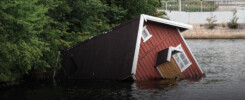In survival situations, one of the most critical components for staying alive is access to clean water. Without it, the human body can only survive for a few days. Therefore, knowing how to collect water effectively is a vital skill for anyone venturing into the great outdoors. In this blog guide, we will explore the importance of water collection in survival, traditional methods for collecting water, and innovative techniques that can help you stay hydrated in challenging environments.
Importance of Water Collection in Survival
Water is essential for maintaining bodily functions, regulating body temperature, and overall health. In survival situations, finding a reliable source of water can be a matter of life and death. By collecting and purifying water, you can prevent dehydration and avoid waterborne illnesses. It is crucial to prioritize water collection as soon as you find yourself in a survival scenario, as your body will quickly start to deteriorate without an adequate supply of water. Having a plan for water collection can significantly increase your chances of survival in the wilderness.
Traditional Methods for Collecting Water
Throughout history, humans have developed various traditional methods for collecting water in survival situations. Some of the most common techniques include using containers to catch rainwater, digging a hole to collect groundwater, and tapping into natural springs or streams. These methods rely on basic principles of gravity and natural water sources to provide a consistent supply of water. Traditional water collection methods require minimal tools and can be effective in a wide range of environments. By familiarizing yourself with these techniques, you can increase your chances of finding water in the wilderness.
Innovative Techniques for Water Collection
In addition to traditional methods, there are also innovative techniques for collecting water that can be useful in survival situations. For example, solar stills can be used to extract water from damp soil or vegetation by harnessing the power of the sun. Another innovative approach is using condensation traps to capture water from the air. These techniques require some knowledge and preparation but can be highly effective in dry or arid environments where traditional water sources may be scarce. By experimenting with different water collection methods, you can expand your survival skills and adapt to a wide range of conditions.
Exploring water collection methods in survival is an essential part of preparing for outdoor adventures and emergency situations. By understanding the importance of water, learning traditional methods, and exploring innovative techniques, you can ensure that you have a reliable supply of water to stay hydrated and healthy in challenging environments. Remember that water is a precious resource, and being prepared to collect and purify it can make all the difference in a survival scenario. Stay informed, stay prepared, and stay safe on your next outdoor excursion.


